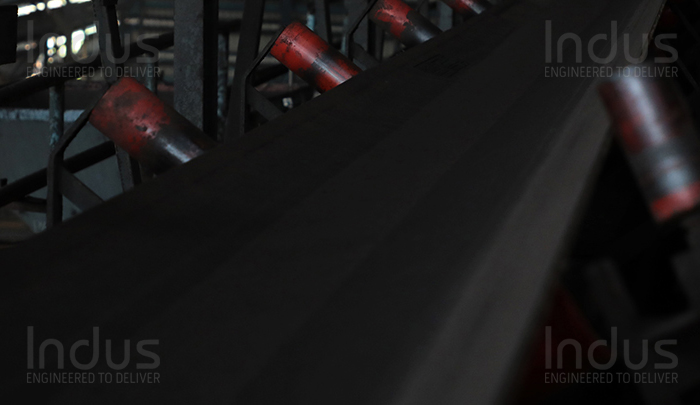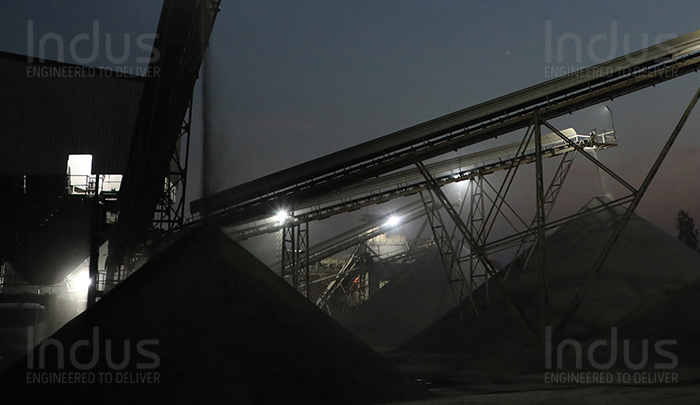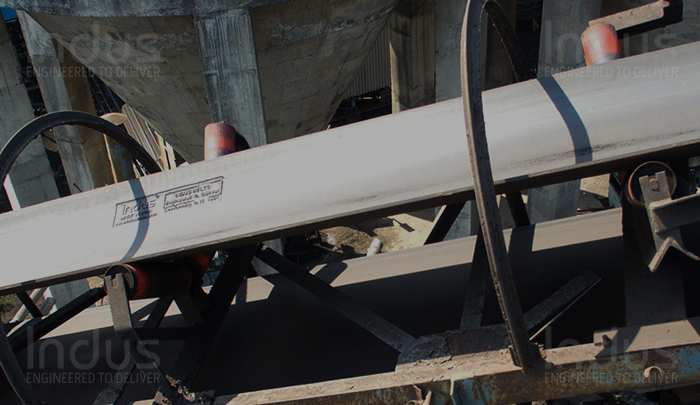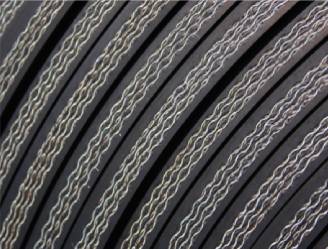









 MULTIPLY TEXTILE BELTS
MULTIPLY TEXTILE BELTSConveyor Belts are one of the most commonly used medium in the field of bulk material handling to convey a variety of materials such as coal, cement, ores, grains, throughout the processing industries worldwide.
At Indus Belts, we manufacture world class high performance Textile Reinforced Rubber Conveyor Belts which are primarily tailor-made products. Various technical parameters are taken into consideration while designing a conveyor belt.

| Standard Widths | 2200 mm(86”) I Up to 5000mm (197”) Available in longitudinal Joint. |
| Type of Fabric | EP / NN / PP / EE |
| Breaker Fabric Ply | Optional / as per customer requirement |
| Standard Belt Rating | 200 N/mm (110 PIW) to 3200 N/mm (1800 PIW) |
| No. of Ply’s | 1 Ply to 8 Ply |
| Rubber Cover Thickness | 1mm (1/25”) to 25mm (1”) |
| Colour | Black |
| Edge | Cut Edge / Moulded Edge |
| Splicing Method | Hot / Cold / Mechanical |
| Single Roll Length | Standard Length : 300 meters (1000’) | Up to 1000 meters (3300’) depending upon total belt thickness |
| Standard Packing | Wrapping in HDPE sheets with Strapping. | (Wooden Crate / Metal Crate packing is available on request) |
| Belt Identification Number | A unique BIN (Belt identification number) at every 10 meters (33’) |



These fabrics are manufactured using following weave patterns.
Depending upon the strength, application & customer requirement, one of the above weave patterns are used to manufacture the fabric.

In Plain Weave construction, each thread, both warp and weft, passes alternately above and below the threads in the other direction and out of phase with the adjacent yarns on either side, running in the same direction.
Indus Multiply Textile Reinforced Rubber Conveyor Belts are available in below listed fabric styles.